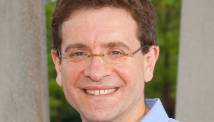A convicted killer, who shot dead two firefighters with a Bushmaster assault rifle after leading them into an ambush when they responded to a house fire he set in Western New York, left behind a typewritten note saying he wanted to "do what I like doing best, killing people," police said.
William Spengler, 62, set his home and a car on fire early Monday morning with the intention of setting a trap to kill firefighters and to see "how much of the neighborhood I can burn down," according to the note he wrote and which police found at the scene. The note did not give a reason for his actions.
Spengler, who served 18 years in prison for beating his 92-year-old grandmother to death with a hammer in 1981, hid Monday morning in a small ditch beside a tree overlooking the sleepy lakeside street in Webster, N.Y., where he lived with his sister, police said today in a news conference.
Police said they found remains in the house, believed to be that of the sister, Cheryl Spengler, 67.
As firefighters arrived on the scene after a 5:30 a.m. 911 call on the morning of Christmas Eve, Spengler opened fire on them with the Bushmaster, the same semi-automatic, military-style weapon used in the Dec. 14 rampage killing of 20 children in Newtown, Conn.
"This was a clear ambush on first responders… Spengler had armed himself heavily and taken area of cover," said Gerald Pickering, the chief of the Webster Police Department.
Armed with a Smith & Wesson .38 caliber revolver, a Mossman 12-gauge shotgun, and the Bushmaster, Spengler killed two firefighters, and injured two more as well as an off-duty police officer at the scene.
As a convicted felon, Spengler could not legally own a firearm and police are investigating how he obtained the weapons.
One firefighter tried to take cover in his fire engine and was killed with a gunshot through the windshield, Pickering said.
Responding police engaged in a gunfight with Spengler, who ultimately died, likely by a self-inflicted gunshot wound to the head.
As police engaged the gunman, more houses along Lake Ontario were engulfed, ultimately razing seven of them. Some 33 people in adjoining homes were displaced by the fire.
SWAT teams were forced to evacuate residents using armored vehicles.
Police identified the two slain firefighter as Lt. Michael Chiapperini, a 20-year veteran of the Webster Police Department and "lifetime firefighter," according to Pickering, and Tomasz Kaczowka, who also worked as a 911 dispatcher.
Two other firefighters were wounded and remain the intensive care unit at Strong Memorial Hospital in Rochester, N.Y.
Joseph Hofsetter was shot once. He sustained an injury to his pelvis and has "a long road to recovery," said Dr. Nicole A. Stassen, a trauma physician.
The second firefighter, Theodore Scardino, was shot twice and received injuries to his left shoulder and left lung, as well as a knee.













